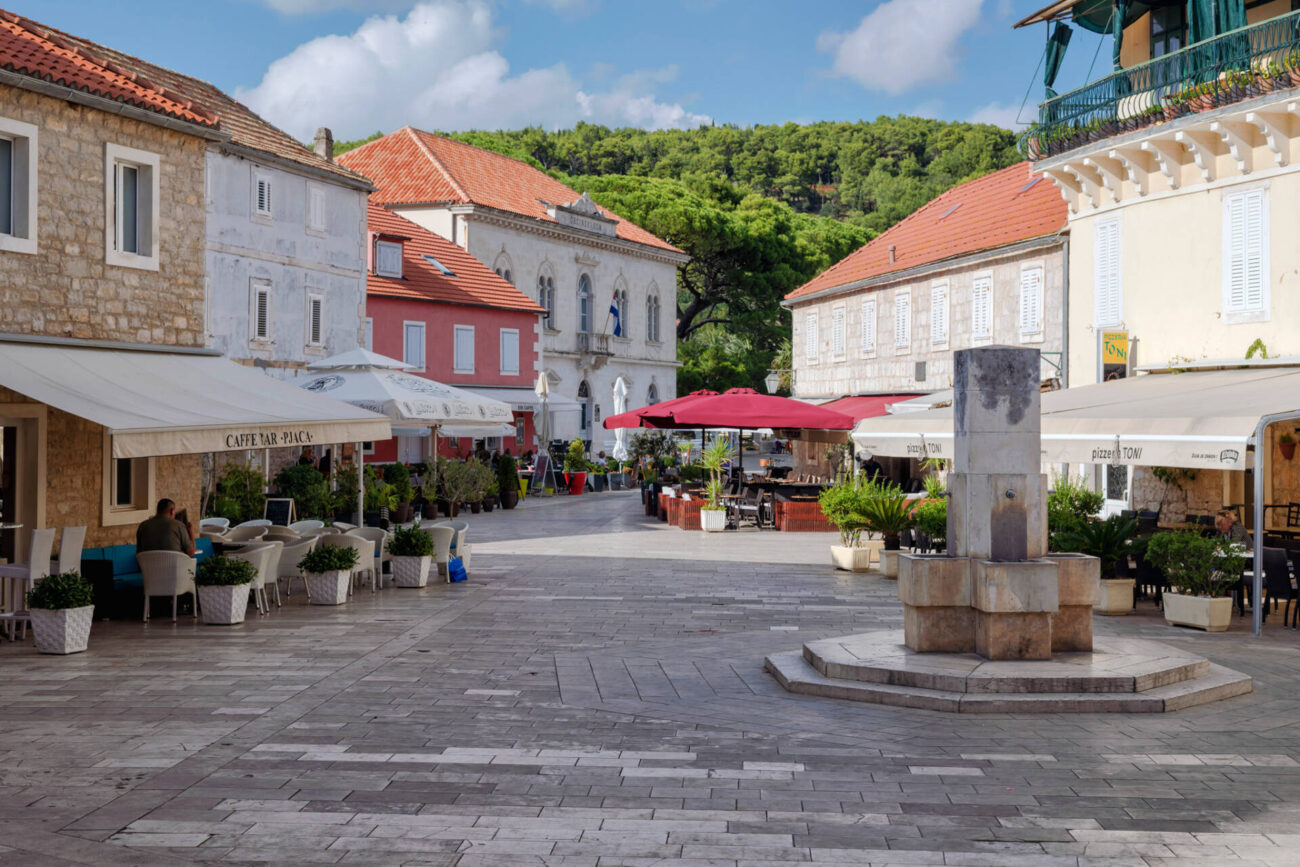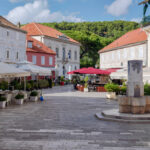
Jelsa’s Drinking Water Fountain
Water has always been extremely important on Hvar island, as you can see from the numerous water cisterns and the remnants of past water conservation and supply systems from ancient, Venetian and Austro-Hungarian times.
Before the modern water supply system was built, Hvar’s residents used their own water sources. Jelsa Council, led by Mayor Juraj Duboković, was the first region on the island to build a public system for drinking water. The event was commemorated by building the fountain on Jelsa’s main square (Pjaca) in 1934, which is still in use as a drinking fountain today.
The Hvar Statute of 1331 describes Jelsa as Fons vocata Jelsa i Portus de Pitue (A fountain called Jelsa, and the port for Pitve). This confirms that there was a source of water in the area of Jelsa, a fact which was known in Roman times. Interestingly, the Slavonic name Jelsa is possibly derived from ‘joha’, meaning alder tree, which thrives in places where there is abundant water. However, an alternative version has it that the name was derived from the Italian version ‘Gelso’, meaning mulberry. (The Italian name for Jelsa is Gelsa, and ‘o’ and ‘a’ are often interchangeable in Jelsan dialect.) As there are still mulberry trees to be found around Jelsa, but not a single alder, which thrives mainly on the mainland further north, the latter theory is probably more plausible.
On the west side of the square is the stream called Slatina, which served as a source of drinking water from ancient times onwards. The letters S.S.M.F.F. and year 1614 are inscribed on the rim of the well by the stream, which is no longer in use. In 1847, the Slatina was extended by a little stream which carries excess fresh water to the sea.
Nowadays most of Hvar’s drinking water comes from the River Cetina on the mainland. The water is carried by gravity from Omiš on the mainland to Brač Island. In 1986 the first pipe was built to bring drinking water on to Hvar Island, with a new, enlarged pipe constructed in 2013. The building of the new water pipe meant that water is brought solely by the force of gravity from the ‘Brač’ reservoir to Hvar’s main ‘Tatinja’ reservoir. In summer, the mains supply is boosted by the inclusion of the local water source in the system. The east end of Hvar is still not fully connected to the mains water supply, although the project to extend the mains to the whole island is underway. Meanwhile the eastern villages rely on their local water cisterns, topped up by supplies brought in by the fire service in the rare case of drought caused by extremely hot dry weather.






